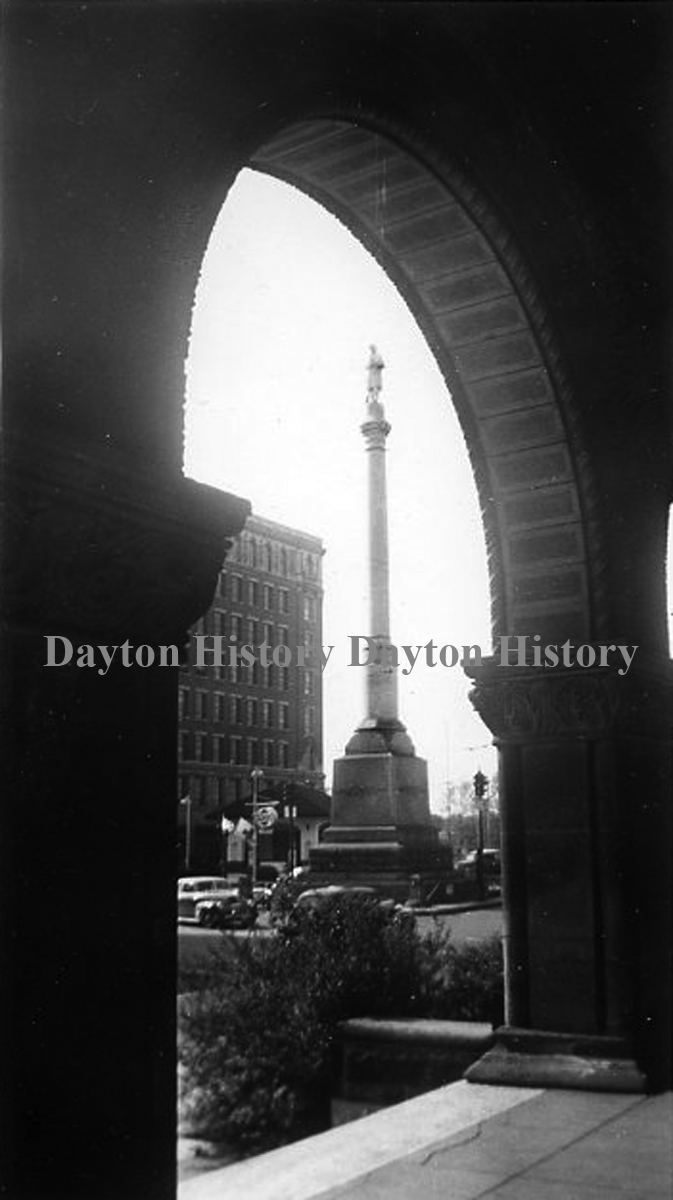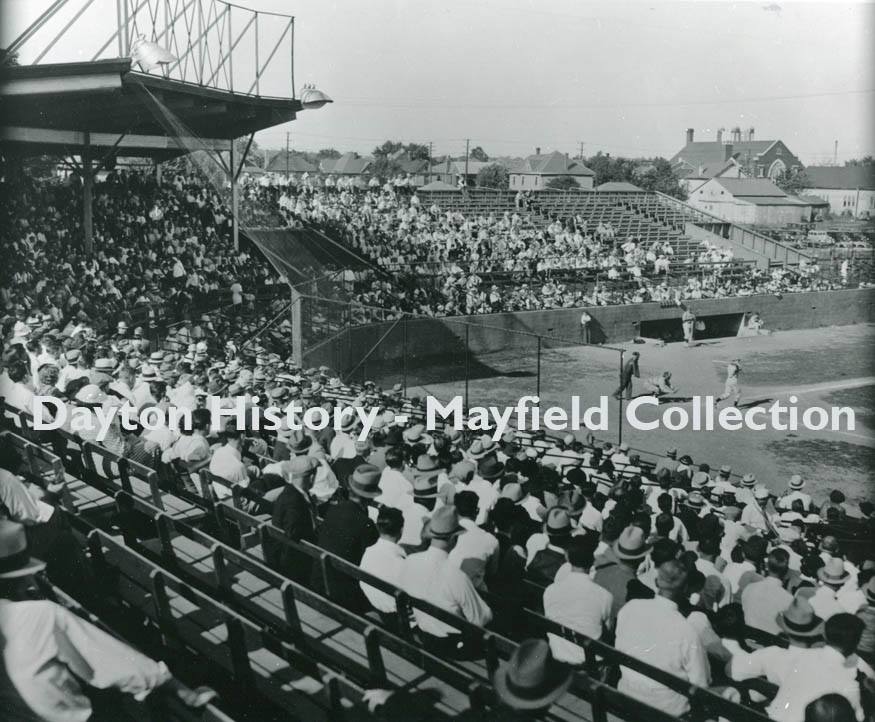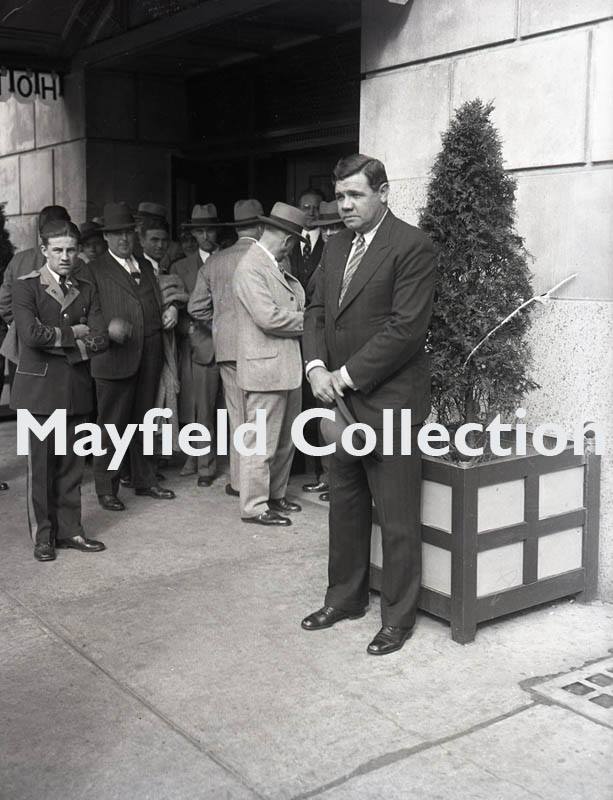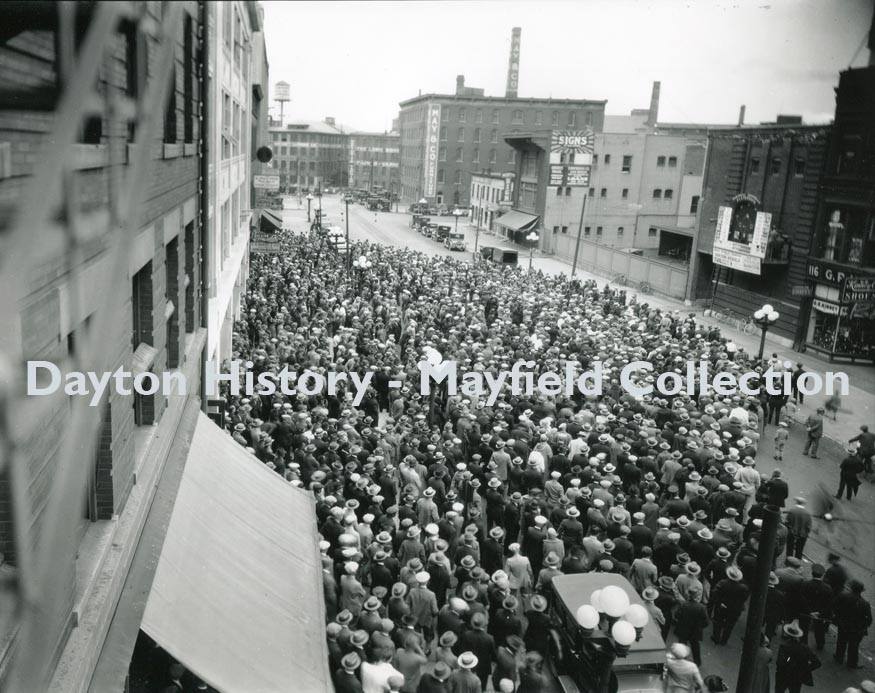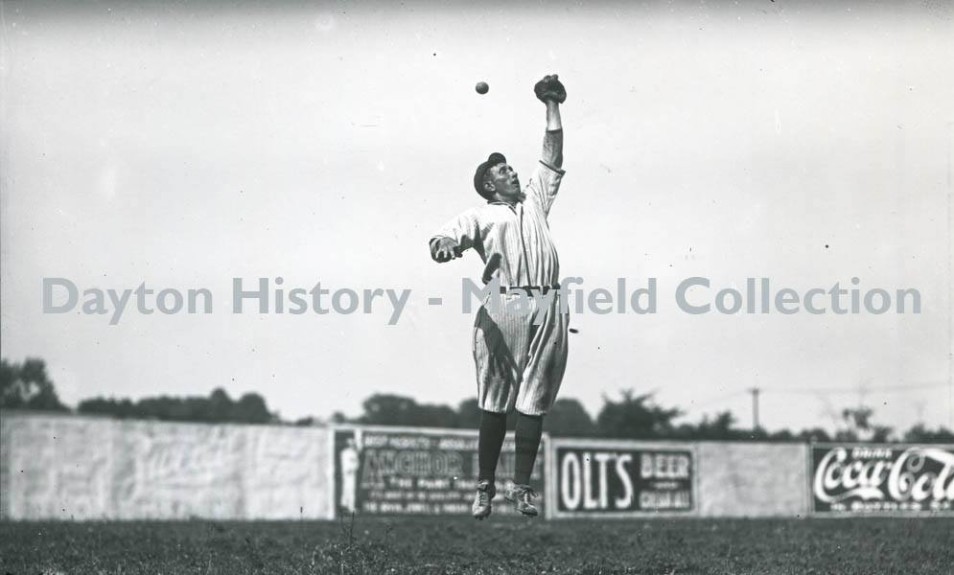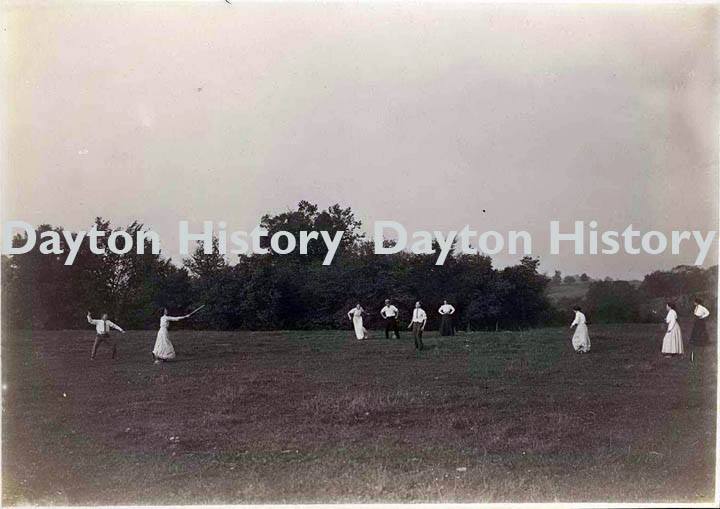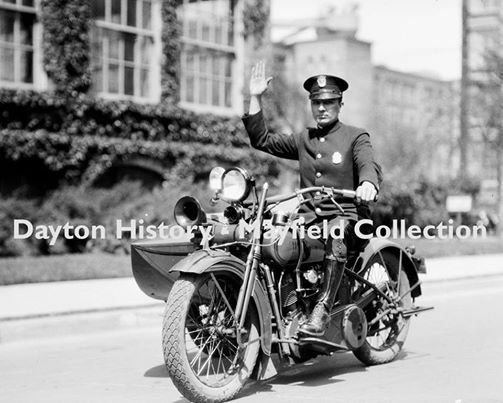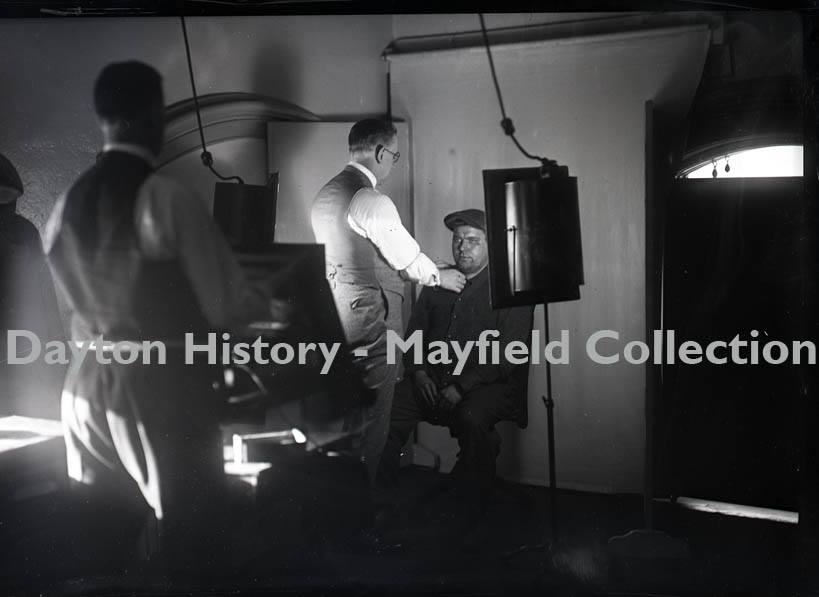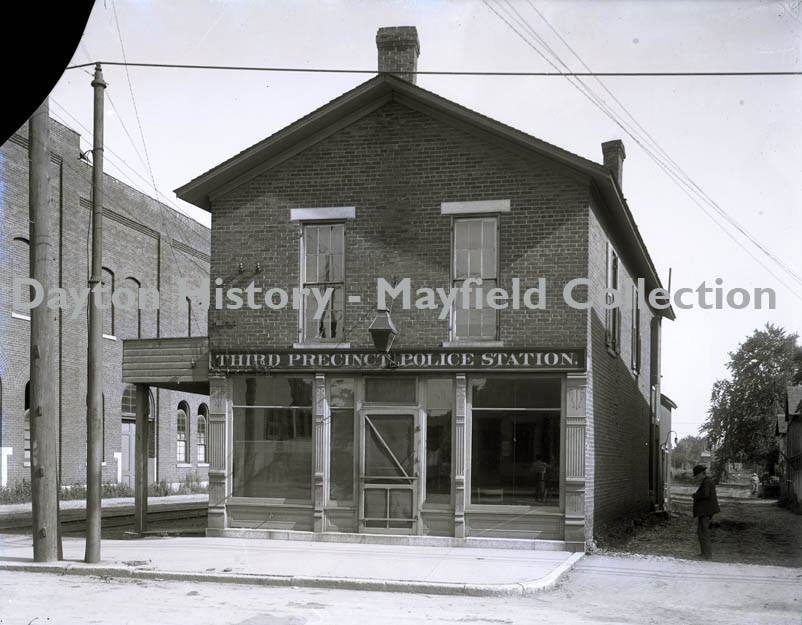ArtiFACT Friday- November 14, 2014
Private Fair Soldiers’ Monument…
Over the centuries, Dayton and its citizens have had much to be proud of: legendary industrial prowess, world-renowned feats, inventive genius and homegrown heroes are just a few examples of the city’s celebrated past. Like most other places, Daytonians have created monuments, memorials and various other landmarks to celebrate these incredible achievements. One such monument is the Private Fair Soldiers’Monument which currently consists of a bronze casting of a lone civil war soldier mounted on a limestone pillar, situated in downtown Dayton. Originally dedicated in July of 1884, in the center of the intersection of Main and Monument Streets, there have been conflicting reports as to whom the soldier is modeled after. With the advent of the automobile, the monument’s original location became problematic, causing a bottle neck in traffic flow, so the statue was moved to Sunrise Park in 1948. In 1991, as part of a Main Street redevelopment plan, the monument was returned to Main Street, just a few yards south of its original location. The monument was designed by Eleftherios Karkadoulias and originally featured a carved Carrera marble statue. Unfortunately, over the years, acid rain had damaged the statue so a bronze replica was made and re-installed as part of the downtown redevelopment plan. The original marble figure of Private Fair was installed and re-dedicated, in 1993, under a shelter at the Veterans Administration Hospital so as to protect it from further damage by the elements. This photograph is from Dayton History’s Image Collection.
To see other historical images from our collection, search our Digital Photo Archive.
ArtiFACT Friday- November 7, 2014
A Photo Opportunity of Historic Proportions…
The Wright Brothers Aviation Center at Carillon Historical Park is home to more original artifacts relating to Wilbur and Orville Wright than are displayed anywhere else in the world. Among these one-of-a-kind items is the 1902 Korona V camera used to take one of the most reproduced photographs in history, the snapshot of Orville Wright piloting the Wright Flyer on the first flight. Taken at approximately 10:35 a.m. on December 17, 1903, on a sand dune near Kitty Hawk, North Carolina, the photo has come to symbolize one of the great forward steps in human progress. After Orville Wright’s 1948 death, the camera was owned by his beloved nephew, Horace, who later donated it to Carillon Park.
To see other historical images from our collection, search our Digital Photo Archive.
ArtiFACT Friday- October 31, 2014
At the Old Ball Game…
Baseball has had a long history in the Gem City. Citizens have been gathering in various open lots and ball fields for over a century to cheer on their favorite teams, both amateur and professional. One popular venue for America’s favorite pastime was Hudson Field, also known as Ducks Park. The field, located at 2400 West Third, was originally built by native Daytonian and Major League player Howard ‘Ducky” Holmes in 1933, with a seating capacity of approximately 3,500. Holmes operated the ball park until 1942, when the Second World War put a stop to the Mid-Atlantic League, of which the Dayton Ducks was a member. The Brooklyn Dodgers Baseball Club had acquired the field in the late 1930s, and sold it back to the city of Dayton in 1945 in support of the Dayton Amateur Baseball Commission. Later that year, the field was rededicated as “Hudson Field” in honor of the late Sergeant Ben Hudson, an active member of the DABC. This photograph is from the William Preston Mayfield/Marvin Christian Collection at Dayton History.
To see other historical images from our collection, search our Digital Photo Archive.
ArtiFACT Friday- October 24, 2014
A Legend Comes to Town…
Dayton, the Gem City, is perhaps most well-known for centuries of innovation and industrial prowess, but that’s not all. Over the last two centuries, Dayton has grown its fair share of successful ball players too. In the late 1800s, Daytonians like William “Steamboat Bill” Otey and Daniel Bickham played professionally for teams in the major leagues. Throughout the 1900’s, many more Daytonians like William “The Rocket” Clemens, Howard “Ducky” Holmes and William “Dutch” Ussat earned the opportunity to play baseball in the major leagues for teams like the St. Louis Cardinals, the Cleveland Indians and the New York Yankees. Perhaps some of these local grown stars were inspired when legendary players like George Herman “Babe” Ruth, Jr. would visit Dayton during various publicity tours. Pictured here is “The Bambino” standing outside the Hotel Moraine in downtown Dayton, circa 1938. This photograph is from the William Preston Mayfield/Marvin Christian Collection at Dayton History.
To see other historical images from our collection, search our Digital Photo Archive.
ArtiFACT Friday- October 17, 2014
A Crowd Gathers…
Daytonians are no strangers to the game of baseball, though the game’s popularity has ebbed and flowed here as in other cities. In peak times the city’s residents would clamor for access, whether it be at the local ball field or via the local newspapers’ many articles and game statistics lists. Crowds of men and women were even known to gather on city streets to watch a hand operated scoreboard, play out important games played elsewhere nationwide in near real time. This image shows one such event, where a large crowd of mostly young boys and men have gathered on the street and sidewalks beside the Dayton Journal Herald newspaper offices to watch the results of an All-Star Baseball Game. This photograph is from the William Preston Mayfield/Marvin Christian Collection at Dayton History.
To see other historical images from our collection, search our Digital Photo Archive.
ArtiFACT Friday- October 10, 2014
Dayton Baseball in Action…
Daytonians were no strangers to baseball. Over the years, the city has been home to many teams, both amateur and semi-professional. Back in the day, not only did every school have their own team, but so did most of the larger corporations and factories. Factories like National Cash Register, Dayton Metal Products, Frigidaire, and the Gebhart Folding Box Company all had company teams that played throughout the city. Organizations like the Y.M.C.A., the Dayton State Hospital and the Buz Fuz Club all fielded teams that would practice and play against each other throughout the summer months as well. At the professional and semi-professional levels, teams like the Dayton Gem City’s, Dayton Indians, Dayton Ducks, Dayton Marcos (Negro National League), and more recently the Dayton Dragons have called our fair city home. Pictured here is an unidentified outfielder, sporting a pin-striped uniform, as he jumps to catch a ball in flight. Signs along the fence row advertise local businesses like Anchor Paints, Olt Bros. Brewing Company and Coca-Cola, dating this photograph to the early 1900s. This photograph is from the William Preston Mayfield/Marvin Christian Collection at Dayton History.
To see other historical images from our collection, search our Digital Photo Archive.
ArtiFACT Friday- October 3, 2014
America’s National Pastime…
While the origins of America’s favorite pastime may be contested, one fact is certain; Americans have had a long-time love affair with the sport of baseball. Though Abner Doubleday is officially credited with inventing baseball in Cooperstown, New York in 1839, boys and even girls of all ages and from all walks of life have played pick-up games of baseball in open fields and empty city lots across the nation for centuries. Ohioans have played an important role in baseball’s heritage, having fielded one of the first all-professional teams in the nation, known as the Cincinnati Red Stockings, as far back as 1869. While these folks are not professionals, pictured here is an image taken during one such spontaneous game, featuring a group of young men and women running the bases in an unidentified open field. Judging by the clothing worn by the players, the image would date to the early 1900s. This photograph is from Dayton History’s Image Collection.
To see other historical images from our collection, search our Digital Photo Archive.
ArtiFACT Friday- September 26, 2014
Motorcycle Police…
On August 17, 1883, the Dayton Police Force adopted its first form of mobile transportation, a police patrol wagon. The wagon served as a multi-purpose conveyance with duties including ambulance removal, prisoner transfer and patrolman transport to assignments. The first Patrol House established for the care and storage of the wagon was a vacant fire house located at 15 Brown Street, near Fifth Street. As years passed by and other means of transportation came onto the national scene, the Dayton Police Department adopted these modes and incorporated them into their policing activities. Patrolmen walking their beats would later be augmented with bicycles and later, motorcycles by February 1911. By the late teens and early 1920s, there was also sparing use of automobiles as the department adapted and as city budgets would allow. Featured in this image, circa 1920s, is an officer on his motorcycle with a sidecar. This photograph is from the NCR Archive at Dayton History.
To see other historical images from our collection, search our Digital Photo Archive.
ArtiFACT Friday- September 19, 2014
Photo Identification Bureau…
In 1891, police headquarters took up permanent residence on the second floor of the Market House, located at South Main and Market Streets (the current location of the RTA Central Hub). The headquarters housed the police command, several detectives, and the Bureau of Identification (B of I). Crime fighting techniques have evolved over the years and the identification bureau has been a key component in this city’s fight. As early as 1879, the Dayton Police Commission began requiring that photographs be taken of “noted criminals and suspicious characters…” Dayton’s B of I followed this directive by maintaining such a file, commonly called “the rogues’ gallery.” Pictured here is a suspect who is being photographed by the B of I as an officer is placing an identification number on the suspect’s collar. This early mug shot would have been taken sometime between 1927 and 1932. This photograph is from the William Preston Mayfield/Marvin Christian Collection at Dayton History.
To see other historical images from our collection, search our Digital Photo Archive.
ArtiFACT Friday- September 12, 2014
Third Precinct Police Station…
During the century from 1805 to 1904, law enforcement in Dayton grew 100-fold, from one town marshal to one hundred patrolmen. Over the next century, we would see those numbers rise again, increasing to over 500 police officers patrolling the streets of our fair city. In 1896, the 1st Precinct Police Station was located in the 200 block of East Sixth Street, but the ever growing city of Dayton needed a police force that could keep up with this growing demand. To meet those needs, two more station houses were added: a 2nd Precinct Police Station was established at 2 Linden Avenue at the corner of East Third Street, and a permanent 3rd Precinct Station was housed at 1828 West Third Street near King Street (later Western Avenue and now known as James H. McGee Boulevard). Pictured here is an image of the Third Precinct Station house. This photograph is from the William Preston Mayfield/Marvin Christian Collection at Dayton History.
To see other historical images from our collection, search our Digital Photo Archive.




